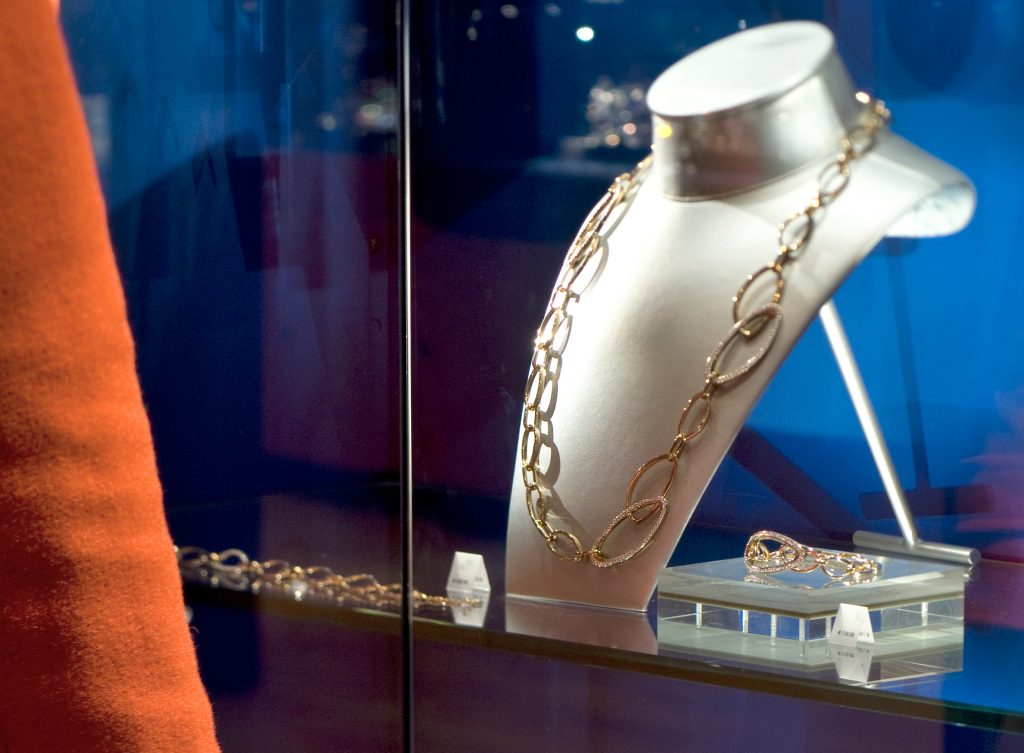
Our two-part series explores ever-changing consumer habits—and how jewelers must react in order to thrive in the next decade… and beyond
The old maxim “There is nothing permanent except change” could have been written to describe the modern American retail landscape.
The Great Recession of 2008 signaled the end of one of the nation’s most prosperous periods in history and forced the closing of thousands of independent retail stores—among them hundreds of family-owned fine jewelry businesses. Those left standing have been challenged by, arguably, more industry-shifting changes in the past decade than their counterparts faced in the half-century leading up to it.
However, it’s the relatively recent rise of online shopping that has most significantly altered (and challenged) traditional retail.
Digital Downsizing
The new, digitally driven environment has diminished more than a few retail titans; put the hurt on shopping mall developers, who are now struggling to reinvent their gargantuan retail spaces in ways that are more about experiences than retail; and defied independent retailers to get creative in playing up smallness as a strength.
“Online shopping has changed literally everything,” says Jay Luchs, a well-known retail real estate broker based in Los Angeles.
The Pew Research Center reported in December that 79 percent of Americans now shop online at least once a month—through desktops, laptops, or mobile devices. That’s up from 22 percent in 2000. The same report notes that social media selling is on the rise; 15 percent of those virtual shoppers said they bought something in the last month after clicking on a social link.
Our growing comfort with buying online has resulted in a significant contraction of brick-and-mortar retail stores—and a global slowdown in planned retail construction.
Companies that put a store in every mall in the pre-internet days—such as Macy’s, Sears, and J.C. Penney—have been struggling to scale back their brick-and-mortar footprints. In March, Urban Outfitters CEO Richard Hayne reported the chain was putting the brakes on new store development, and added that he expects the “downsizing” trend to continue for most major retailers. He told investors that the effect of brands committing too much square footage to retail “created a bubble…and like housing, that bubble has now burst.”

The Showrooming Effect
The easy access of online shopping has also changed the way consumers shop. The internet “brings customers in and also pushes people away,” says Susan Eisen, owner of Susan Eisen Fine Jewelry & Watches in El Paso, Texas. “People do a lot of pre-shopping on a website, then come in with a good idea of what they want.”
The flip side, Eisen adds, is that other people will saunter into a well-respected jewelry store to “use your time and your expertise to learn about something,” then buy the same item online for less.
Showrooming, the practice of pricing products you see in a store using a mobile device, has changed the selling equation profoundly, too. Discounts (even very deep discounts) on jewelry and other luxury items have become a daily expectation for many shoppers.
“People are absolutely showrooming when they come into my store,” says Andrea Riso, owner of Talisman Collection in El Dorado Hills, Calif. “They come here and look around, then buy direct from the designer online. Then they buy in-store what everyone buys: a halo engagement ring.”
It’s no surprise, then, that while big retailers are shuttering stores at a furious clip, off-price retailers including Nordstrom Rack, Saks Off Fifth, and T.J. Maxx are seeing steady gains. In many ways, the off-price store environment parallels the experience of shopping on social media networks—which is poised to be the next big frontier in retailing. The inventory changes constantly, discounts vary wildly, and the opportunity to score big on a valuable item priced well below retail beckons.
Renters’ Assurance
Another manifestation of the deep-discount expectation is the proliferation of the secondhand market for fine jewelry and watches.
Websites such as The RealReal (which sells designer jewelry and watches along with apparel) and Hodinkee (which sells vintage men’s watches) are becoming trusted shopping resources, their founders widely hailed as retail mavericks. The RealReal has four “watch valuation” offices in major cities to attract consumers looking to consign timepieces on the site; founder and CEO Julie Wainwright told the San Francisco Chronicle in 2016 that jewelry and watches were the fastest-growing category for her business.
The phenomenon of rented luxury can also be traced to the nation’s preoccupation with easy access to entertainment. A decade ago, the thought of paying a monthly service fee to stream TV or music—instead of owning those media outright—seemed like a nonstarter. Today, with Spotify, Netflix, Hulu, Amazon Prime, and similar services, renting entertainment is the norm.
And now the rental rush has hit the luxury goods sector.
The website Eleven James lets members borrow luxury timepieces costing $5,000 and often much more for two to three months at a time. Founder and CEO Randy Brandoff told JCK in January that after hunting for a service like his in vain, “I set out to build one.” Eleven James, which debuted in 2013 and boasts a membership “in the low thousands,” raised $30 million in capital before it debuted.
The Brick-and-Mortar Outlook
With so many low-priced options at consumers’ fingertips, will the traditional, full-priced retailer survive in the long term? The answer is yes—but only if other aspects of the brand experience sweeten the value proposition for consumers.
“Brick-and-mortar retail’s not dying,” Luchs says. “But it is changing. I’m seeing more clients looking to do experimental things like combining food with fashion in the same space. And the more innovative brands—they’re not blowing money on stores right away. They’re doing it smart and starting online.”
Three years ago, Luchs helped jewelry designer Irene Neuwirth find the space for her sole namesake boutique and adjacent office on trendy Melrose Place in Los Angeles. He says Neuwirth’s trajectory—which began with an established wholesale presence that helped introduce her to the global fashion flock—represents a very modern mode of retailing.
“Ten years ago, Irene would have needed to have 10 stores around the country to make brick-and-mortar retail worthwhile,” Luchs says. “But she’s doing it right for what’s happening now. She only needs that one store and one office right there on that really great, hot street. It’s a different thing entirely.”
— Part two of this feature will appear in JCK’s June issue. —
(Woman: Eva-Katalin/Getty; necklace form: Pidjoe/Getty)